|
Weaving Threads Of Art At The Ojai Valley Museum
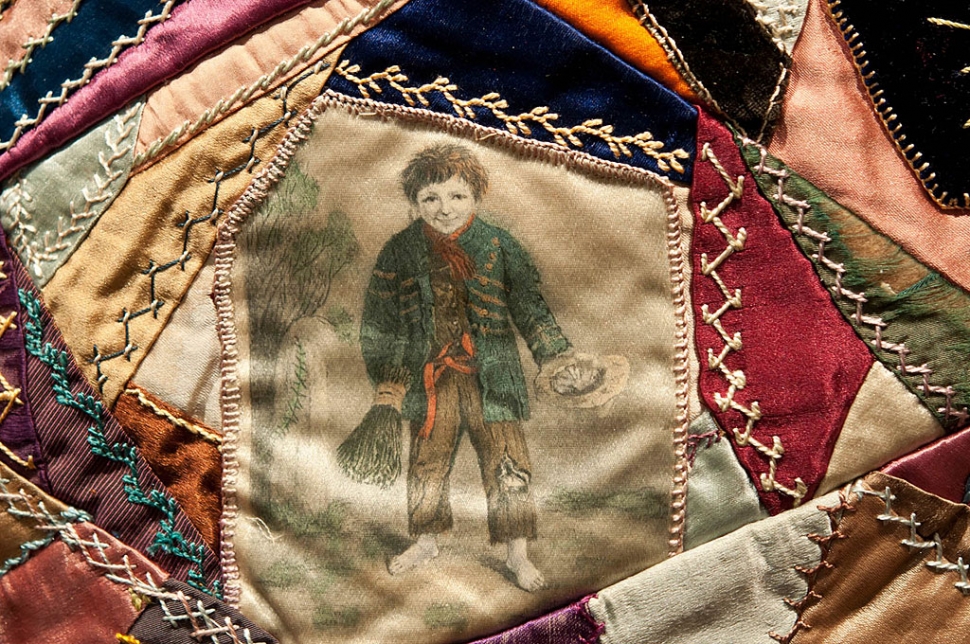 Detail 1884 Crazy Quilt, Photographer Myrna Cambianica By Letitia Grimes — Monday, March 4th, 2013
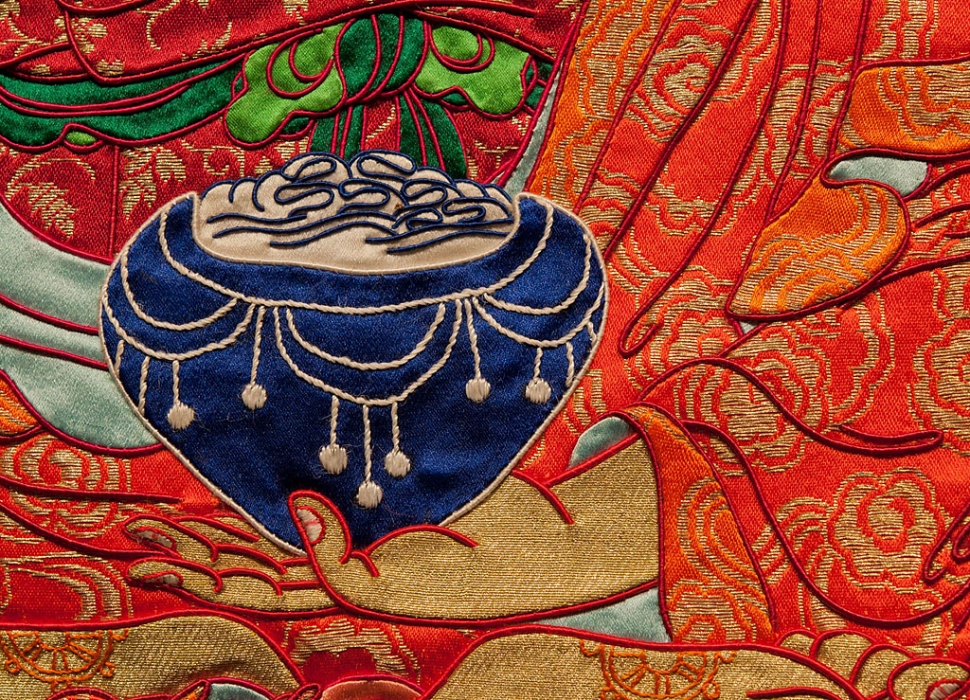 Detail from Artist Leslie Wongmo’s Six Supports, Photographer Myrna Cambianica 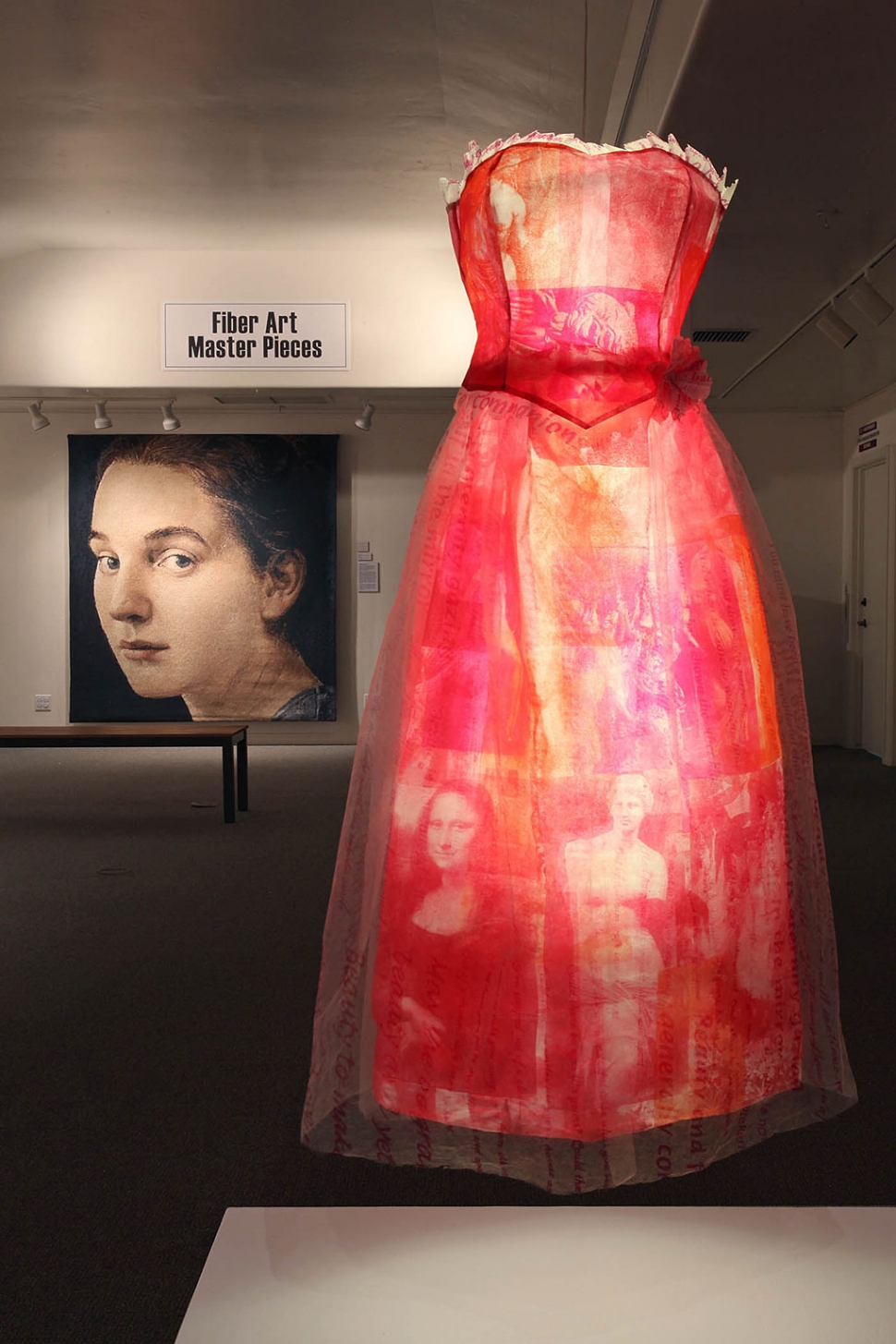 Gallery Detail: Linda Taylor dress and tapestry by John Nava. Photographer Roger Conrad 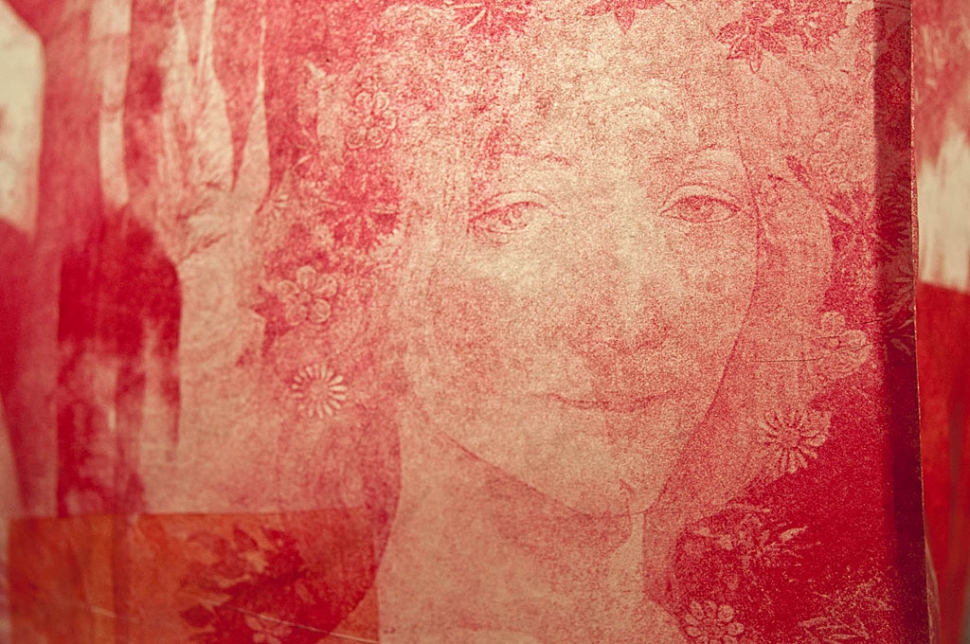 Detail Dress by Artist Linda Taylor. Photographer Myrna Cambianica 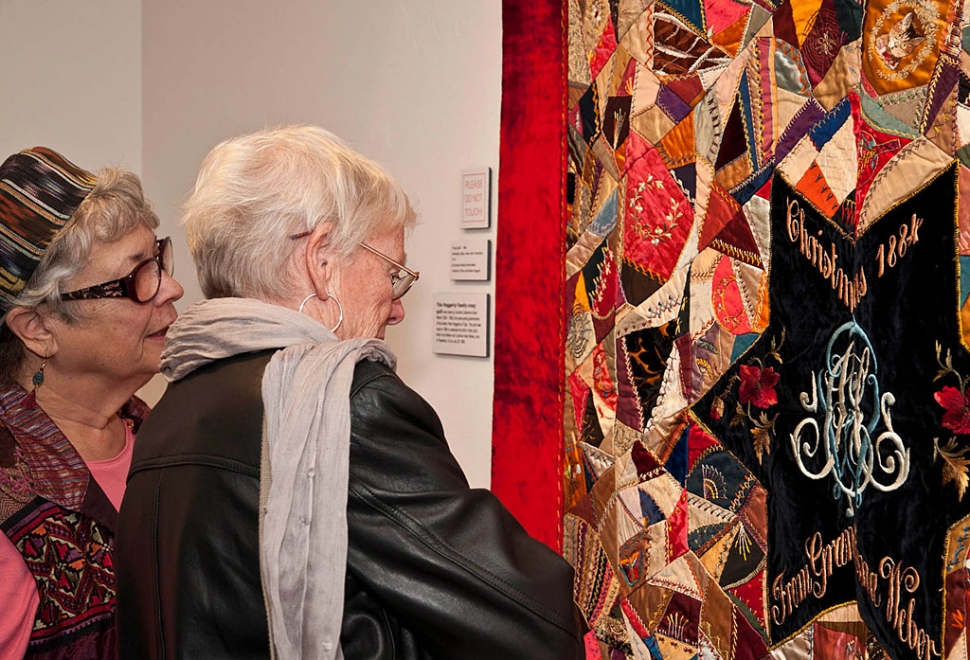 Visitors Viewing 1884 Haggerty Crazy Quilt. Photographer Myrna Cambianica 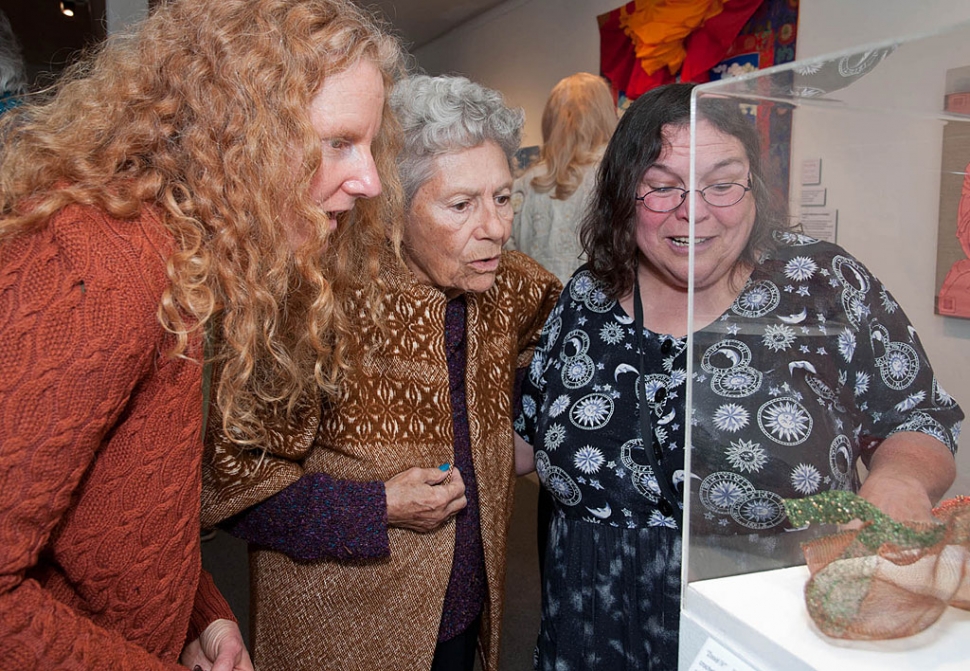 Visitors Viewing Artist Gerri McMillins “Zooid” Basketry. Photographer Myrna Cambianica 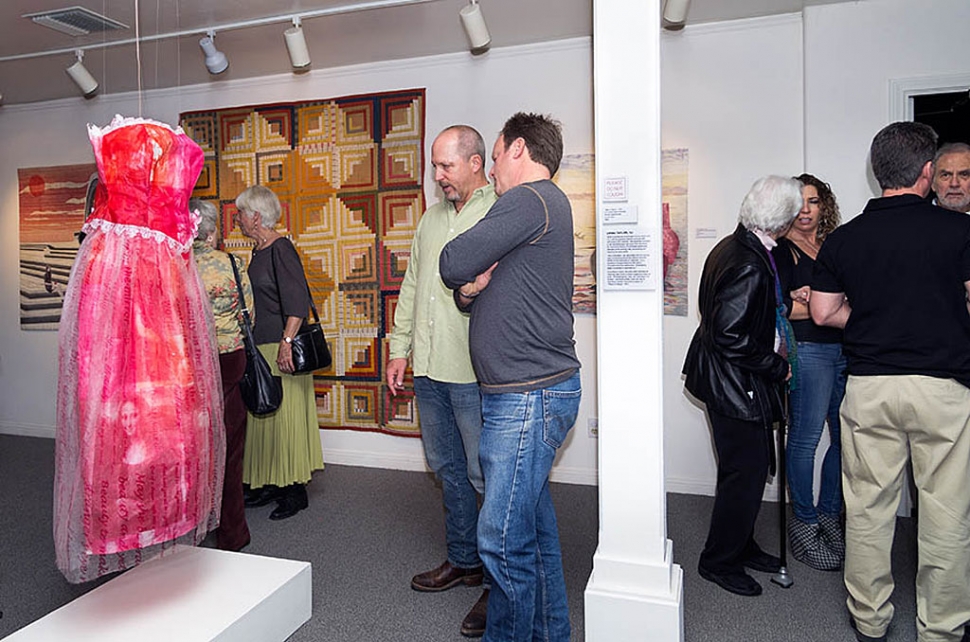 Two visitors viewing the Linda Taylor dress. Photographer Les Dublin 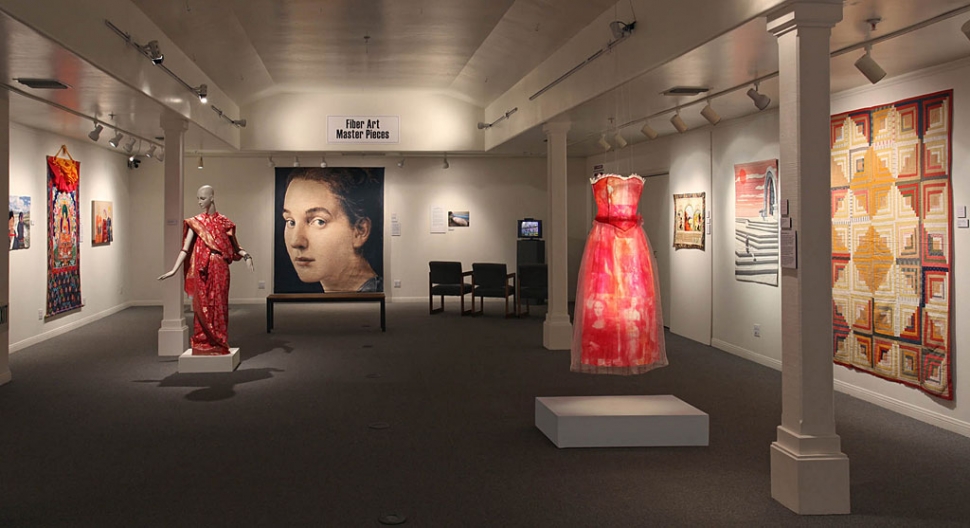 Gallery View of Fiber Art Master Pieces Exhibit. Photographer Roger Conrad It’s easy to guess what’s going on inside the Ojai Valley Museum just by glancing at the outside entrance in relation to the banners in the courtyard corners. The Yarn Bombers of Ojai - otherwise known as the Naughty ‘Nitters or Guerilla Grannies - arrived surreptitiously on the night of January 31st and installed a riot of crocheted street art. Yarn bombing, or yarnstorming, is a spontaneous international movement of secretive and anonymous fiber artists. They represent the “outsider art” component of the current exhibit at the museum, “Fiber Art Master Pieces,” which runs through March 31, 2013. The yarn party outside celebrates the occasion. Michele Pracy, Museum Director and curator/designer of the exhibit, had two main criteria in selecting the pieces: “First, each piece must be art, then it must be made of fiber in a masterful technique.” Over 150 years of local fiber arts are represented, from wearable art to soft sculpture, from 19th century quilts to a 21st century large scale tapestry. Pracy has woven a fabric of visual relationships in the exhibit. Her placement of modern fabric art side by side with century-old quilts illuminates the beauty and finesse of each. Her wall texts guide the visitor seamlessly through centuries of technique and innovation. The multiple levels of meaning in the exhibit have to be experienced in person, as there is so much content beyond the visual image. The deepest level is primal, related to the need to survive and to soften the impact of the elements on the human body. Our earliest memories recall the texture of a blanket or sweater. So intimate is this connection that touching the works in the exhibit is an almost irresistible urge - but alas, next to each piece a “Do Not Touch” sign is posted. Curator Pracy explains that the oils in our fingers, although invisible to us, can irreparably damage the fabrics. Another level of meaning is the human need for beauty beyond the practical usefulness of an object. Two “crazy” quilts in the exhibit, on loan from the Thacher and Haggerty families of Ojai, lavishly emphasize beauty over utility. Until the rise of abstract art in the middle of the 20th century, quilts were not taken seriously - after all, they were created by anonymous women in the home rather than in the studios of famous artists with wealthy patrons. But the abstract movement sharpened our eyes and we can now appreciate the mastery of color and design in these amazing fabric artworks. They have what Pracy calls a “push-pull” effect on the visitor. We step back to see the unity of vibrating shapes and saturated colors, and then the intricate web of stitching and patchwork pulls us back in. The quilt maker must hold the seams together with exterior stitches, and she turns this necessity into design. Lines of silk thread flow like phrases of music, forming one surprising shape after another. Closer examination also reveals pictorial elements sewn into the abstract shapes. Look for the spider in the Haggerty quilt: it’s a symbol of the fabric skills of the quilter, and included for good luck! The human need for inspiration has been met in the Western world most often by painting and sculpture. But in Tibet, the fabric arts provide the greatest fulfillment of this need. Leslie Rinchen-Wongmo is a master of the Tibetan thangka, a sacred image created from pieces of hand-loomed silk. Although sometimes referred to as appliqué, a thangka is really a kind of fabric mosaic, stitched with horsehair cords. Rinchen-Wongmo learned this exacting art directly from masters in the Tibetan exile community of Dharamsala, India. She explains, however, that the concept of mastership is different there: the emphasis is on the art itself, rather than on the personality of the individual artist. Tibetan workshops create “master thangkas, not master thangka artists.” This is a deeply tactile art, carrying the touch of the human hand in every thread. The beauty and sensuality of the silk, combined with images of enlightened beings, are designed to draw the viewer closer to the thangka and to encourage spiritual life. The thangka invites and opens up like a flower as one comes closer. The need to experiment and express contemporary consciousness is now being met by the wide range of possibilities found in the fiber arts. Since the middle of the 20th century, artists have ventured into unconventional fibers, multiple layers, and mixed media. Carolyn Ryan’s work uses all of these techniques to create a haunting sense of the isolation people often experience in modern society. In her hands, fabric and thread transform into tactile poetry. Puckered cloth, heavy stitching, superimposed monoprints - all become metaphors of an indefinable loneliness. Gerri McMillin reveals an underwater world of “Zooids,” woven out of screen wire and crochet. These seemingly incompatible elements create a startlingly original cross between a basket and a sea creature. Another unexpected fiber in the exhibit is translucent Japanese paper. Linda Taylor’s lipstick-pink paper dress is layered in monoprints symbolizing cultural expectations of beauty in women from the Renaissance to Hollywood. The 40 pieces in the Ojai Valley Museum’s “Fiber Art Master Pieces” engage the visitor at multiple levels, in a way that painting and sculpture cannot quite fulfill. A painting may be beautiful, but can you take it off the wall and wrap it around yourself on a freezing night? Fiber art involves the whole human being, grounding us as it inspires, delights, and challenges. A special thanks is extended to Ojai Community Bank, sponsor of “Fiber Art Master Pieces.” For more information, call the museum at (805) 640-1390, ext. 203, e-mail ojaimuseum@sbcglobal.net or visit the museum website at: Ojai Valley Museum.org The Ojai Valley Museum, established in 1967, is generously supported in part by museum members, private donors, business sponsors and underwriters, the Smith-Hobson Foundation, Wood-Claeyssens Foundation, City of Ojai, Rotary Club of Ojai, and the Ojai Civic Association. |
